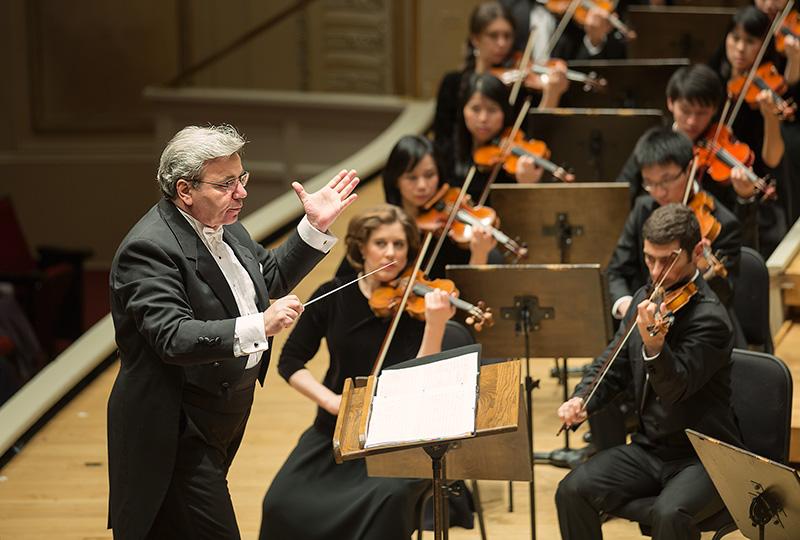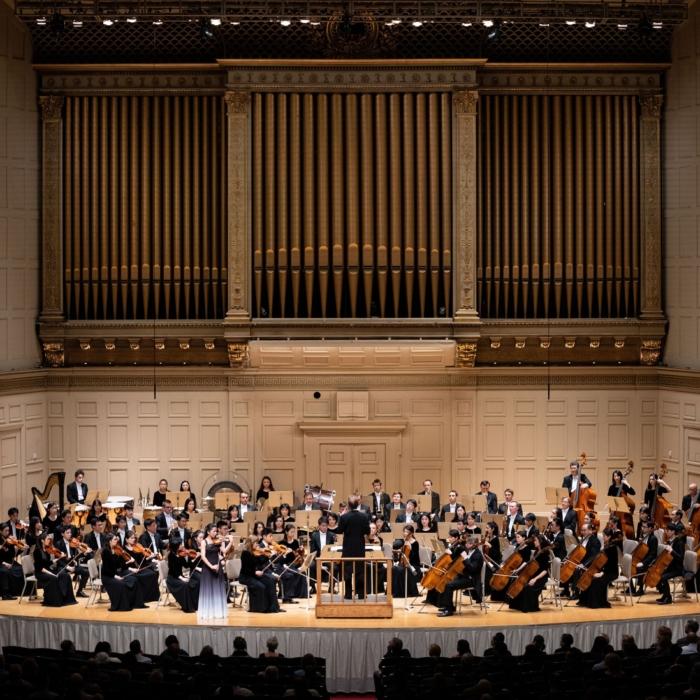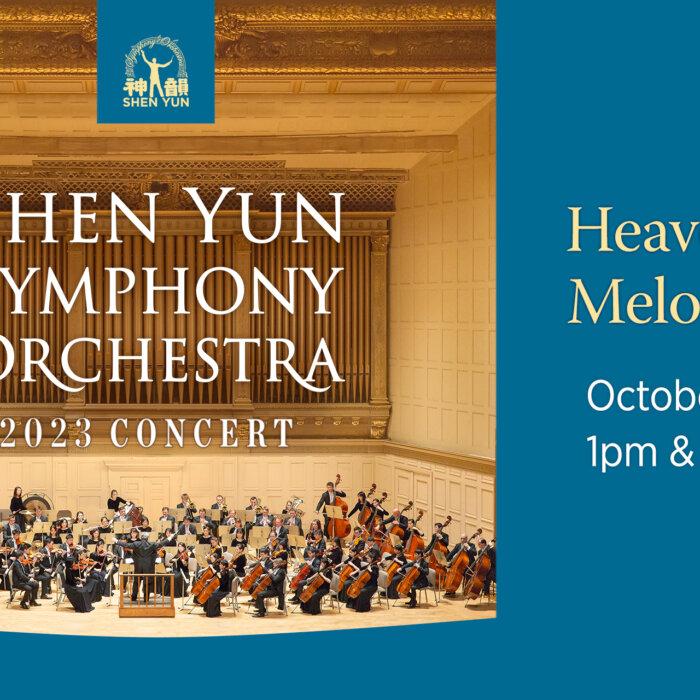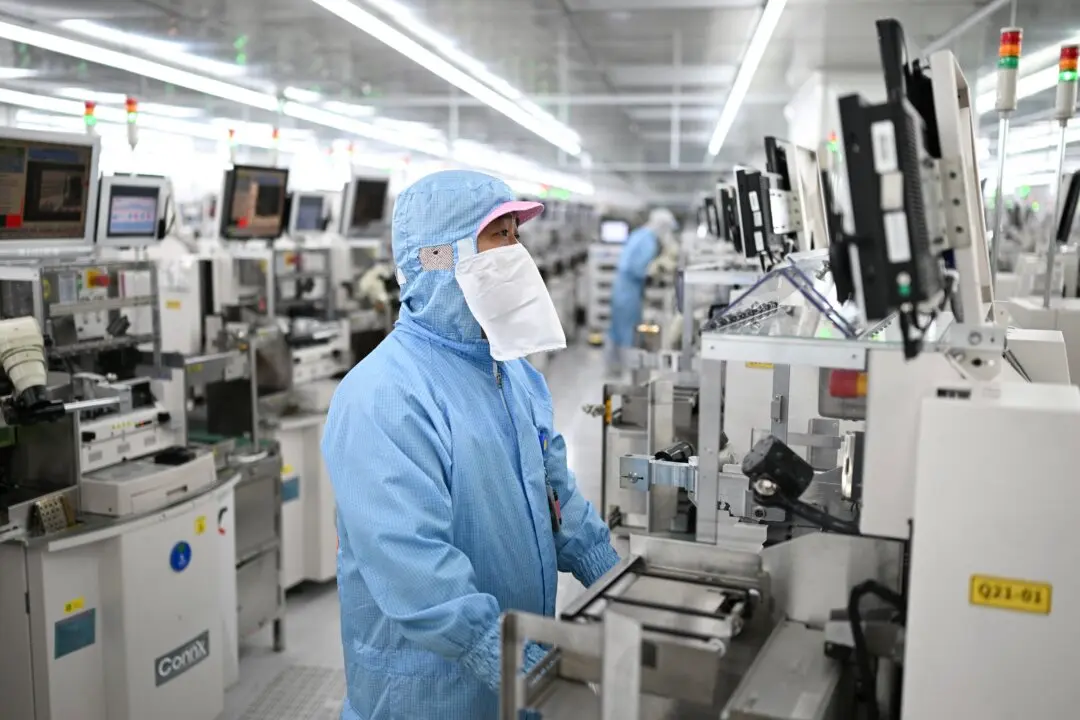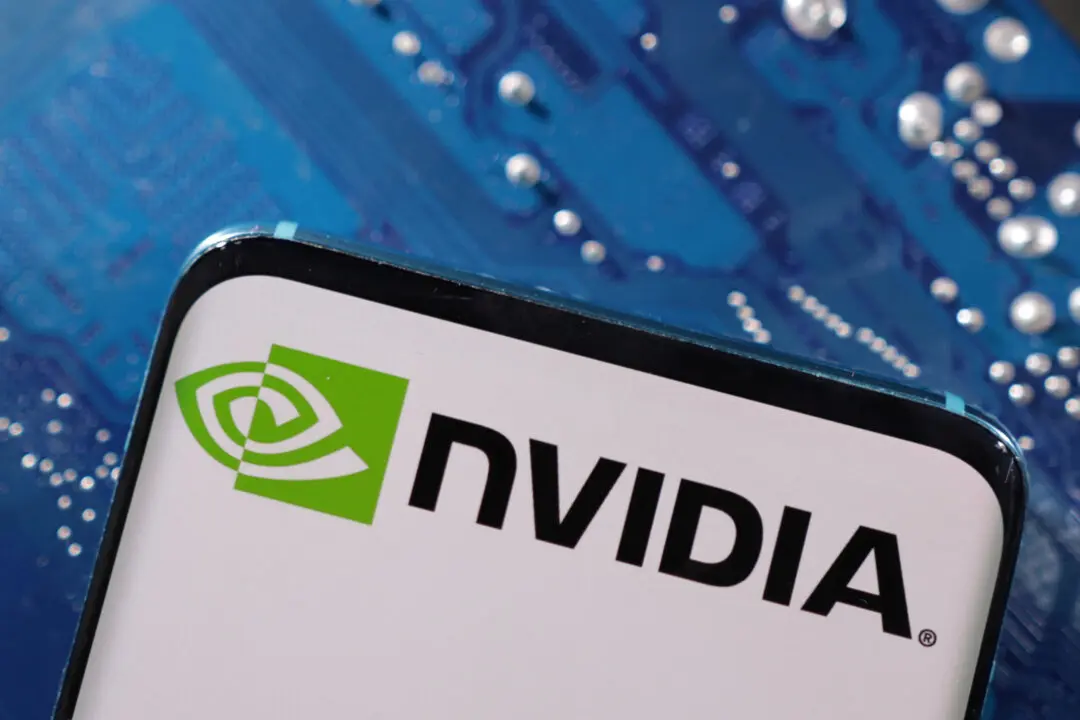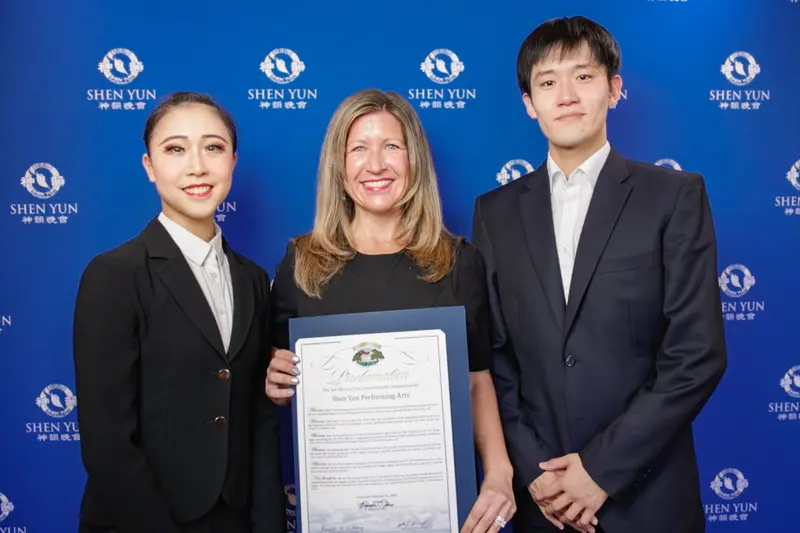Milen Nachev has conducted orchestras with Shen Yun Performing Arts for 10 seasons and led the Shen Yun Symphony Orchestra (SYSO), comprised of 100 of the best Shen Yun musicians worldwide.
“The Shen Yun Symphony Orchestra has played a significant role in preserving and promoting the classical and traditional music repertoire by performing our own original compositions as well as classical masterpieces,” Mr. Nachev said in a recent interview with Shen Yun.
Every SYSO concert program features classical favorites alongside original works created by Shen Yun’s in-house composers.
In Demand
These original works are why SYSO performs standalone concerts—each year, Shen Yun performs an all-new program with original compositions accompanying the dozen-plus dances. Due to high demand, the New York-based company began offering recordings of the soundtracks, and in 2012, several of the orchestras were combined to give a concert at Carnegie Hall. Today, Shen Yun is comprised of eight touring groups.“It’s a new sound when you blend one culture with another culture—it worked beautifully,” said mezzo-soprano JoAnn Domb after attending a concert.
“The ability of composers and arrangers to create this kind of excellence is just amazing—that man can really do this,” said Fred Astmann, an organist.
“I’ve never heard anything better anywhere!” said Tim Knight, a musician who has worked with renowned orchestras.
“The quality is so impressive, and a lot of the original pieces have Chinese cultural meaning behind them,” he said. “You can hear truth, beauty, and goodness in the music very clearly.”
Phil Dawicki, also attending the concert in Boston, secured balcony tickets at the last minute and said the distance in no way diminished the energy of the music washing over him.
“It was like air coming at you, with sound, and sort of uplifting just makes you feel good to be alive.”
Retired chorus teacher Dale Whittington said it was the “greatest orchestra I’ve ever heard” after a performance in the nation’s capital.
“I’m glad that I lived long enough to hear this,” he added.
Since its debut more than a decade ago, SYSO has graced the halls of the Kennedy Center, Tokyo Opera City Concert Hall, Boston Symphony Center, Segerstrom Concert Hall, and many others.
‘A Certain Magical Transparency’
Ancient Chinese instruments are blended seamlessly in a Western orchestra. The grandeur of the symphony amplifies Ancient Chinese melodies.“The Chinese instruments help us create special tonal colors and make our sonority and texture particularly rich and distinctive,” said Mr. Nachev.
“You have beautiful and ever-flowing Eastern melodies supported and amplified by the power of the Western harmony,” the conductor added. “And with the full-size symphony orchestra, you have incredible dynamic range.
“In this performance, we have the capability to create for the audience a certain magical transparency using imaginative orchestration. It’s like opening the door to a different realm.
“We strive to create a transcendent musical experience that resonates with the hearts and minds of the audience,” said Mr. Nachev, originally from Bulgaria.
He was the principal conductor and music director of several major Eastern European orchestras, recording pieces broadcast by BBC and Radio France.
‘Positive Energy’
In a previous interview, Mr. Nachev said the artists of Shen Yun all take their spiritual cultivation very seriously. Like most others involved in Shen Yun, he practices Falun Gong, also called Falun Dafa, an ancient Chinese spiritual practice consisting of simple, slow-moving meditation exercises and teachings based on the principles of truthfulness, compassion, and tolerance. It grew in popularity during the 1990s, with 70 million to 100 million adherents in China by the end of the decade, according to official estimates at the time.Mr. Nachev believes the practice accounts for the incredible harmony and inspiration he sees in the group.
“Being in the environment of spiritual cultivation helps a lot. We are literally living together, studying together, developing ourselves together, we are meditating together—and this creates positive energy all around us. I have no doubt that this positive energy helps a lot when we go on stage,” he said.
“We are not just performing music, playing notes and tunes. We go deep inside the meaning of the music, even past the emotional side ... to illustrate the deeper meaning.
“It’s like a secret code inside the musical text that we bring out to the audience. It’s not necessary for them to understand the secret code, but the effect and the resonance [are] there,” he said.

